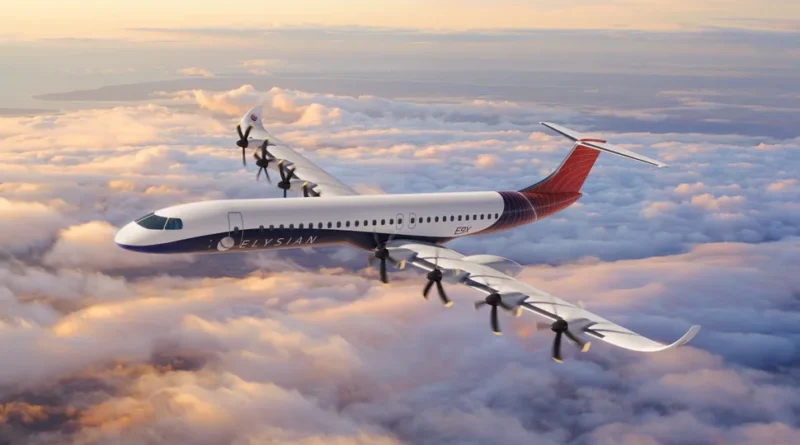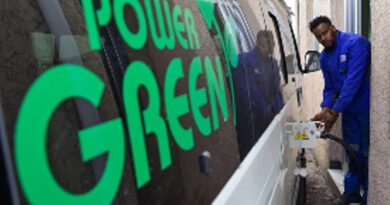Largest ever fully electric concept plane could take to the skies by 2033
The Elysian E9X is a 90-seater plane that can one day travel up to 620 miles, and it’s based on research that claims our previous assumptions on battery-electric aircraft were wrong.
A startup has unveiled its design for a fully electric passenger jet that can seat up to 90 passengers, with plans to launch it within the next 10 years.
The E9X concept, designed by the Dutch company Elysian, is a battery-powered plane that can fly up to 500 miles (800 kilometers) on a single charge based on a theoretical battery pack of 360 watt-hours per kilogram—the standard measure of battery density. By contrast, a Tesla battery has a density of between 272 and 296 Wh/kg, according to Inside EVs. With future improvements, the startup hopes to boost the plane’s range up to 620 miles (1,000 km).
The design of the E9X and the core technology that powers it are based on a collaboration with researchers at the Delft University of Technology, which produced two papers published Jan. 4 in the journal American Institute of Aeronautics and Astronautics (AIAA).
The first paper focused on redefining assumptions around existing battery technology. Most literature suggests battery-electric aircraft are only feasible for shorter-range trips of up to 250 miles (400 km) with up to 19 passengers on board. As a result, most real-world efforts have focused on designing regional or inter-city electric aircraft.
These widely used assumptions likely stem from much earlier expectations and technological constraints, Simay Akar, a senior member of the Institute of Electrical and Electronics Engineers and the CEO and founder of AK Energy Consulting, told Live Science.
In the paper, the authors suggest that advances in battery technology mean that larger aircraft can house denser batteries. Meeting the design specifications, however, can’t be done with commercially available technology; it “would depend on breakthroughs in battery energy density, weight, and efficiency to achieve such ambitious goals,” Akar said.
The study also argues that planes can be designed to be more aerodynamically efficient than previously thought, meaning they could generate more lift without increasing drag.
They performed calculations on high-level estimates from previous aircraft to show there’s a “design space” where both energy density and aerodynamic efficiency can “reach significantly higher values than often assumed.”
They validated these assumptions by making more detailed estimates that incorporated each component of a plane—including onboard equipment and systems—to show that a hypothetical plane could fly once breakthroughs were made.
The second paper outlined the rough dimensions of the 90-seater E9X aircraft, which would include batteries integrated into the wings, a low-wing configuration, as well as folding wingtips. The plane they designed has an energy consumption of 167 Wh per passenger per kilometer, meaning it takes 167 watts to ferry each passenger per kilometer. This equates to “an environmental impact well below” kerosene, electro-fueled sustainable aviation fuel (eSAF), or hydrogen-based alternatives. The authors added that this environmental impact is comparable to land-based modes of transport, such as today’s electric cars.
“High-density battery technology is one of the challenges at this moment because scaling up production and further improving density remain crucial for widespread adoption,” said Akar. “360 Wh/kg energy density is a significant leap from current battery technology and crucial for an electric plane’s range. Also, ground infrastructure and regulations still need to adapt to accommodate electric aircraft prior to the targeted timeline.”
The E9X won’t be the first electric passenger aircraft to take flight if and when it does in 2033. The first electric passenger plane was the Eviation Alice, designed to accommodate up to nine passengers and two crew, with its manufacturer first testing a prototype in September 2022 ahead of a target date of 2027 for full production, company representatives said. It has a range of approximately 250 nautical miles (approximately 288 miles or 463 km).
Whether or not the company hits this date remains to be seen, but Eviation has struck agreements with carriers to ship the plane in the future, including a written agreement with the European regional airline FlyVbird to supply 25 aircraft, with an option for a further 25 in the future.
Source : livescience.com




